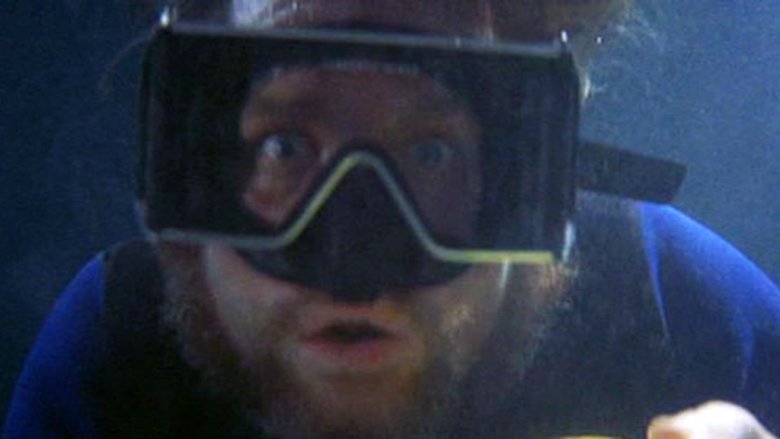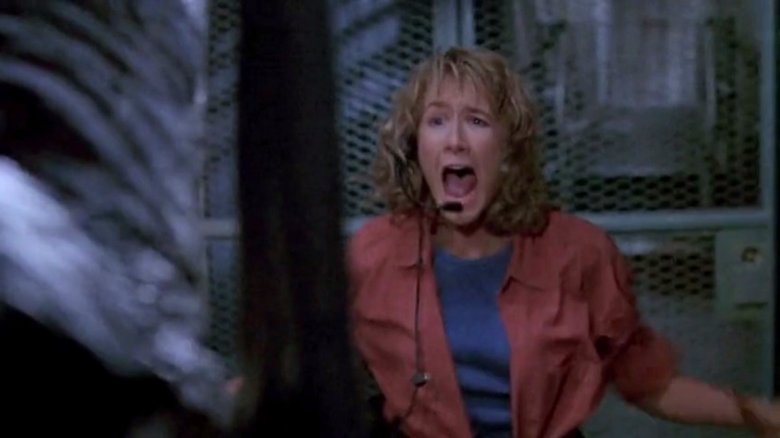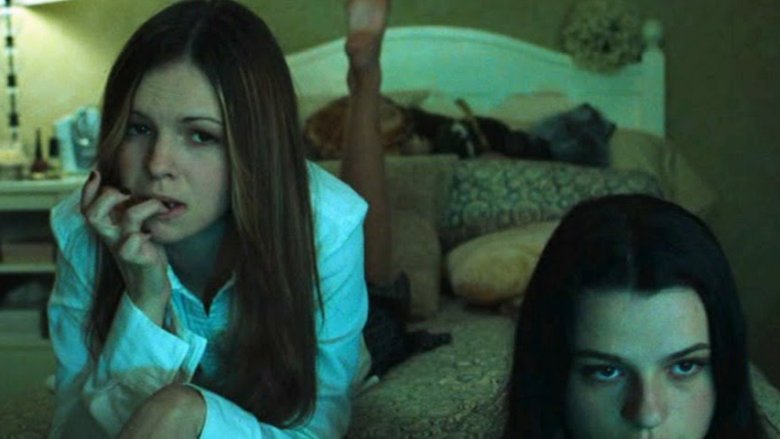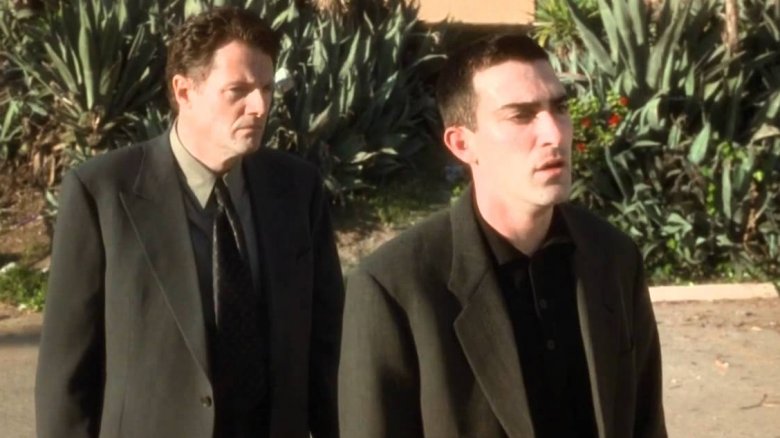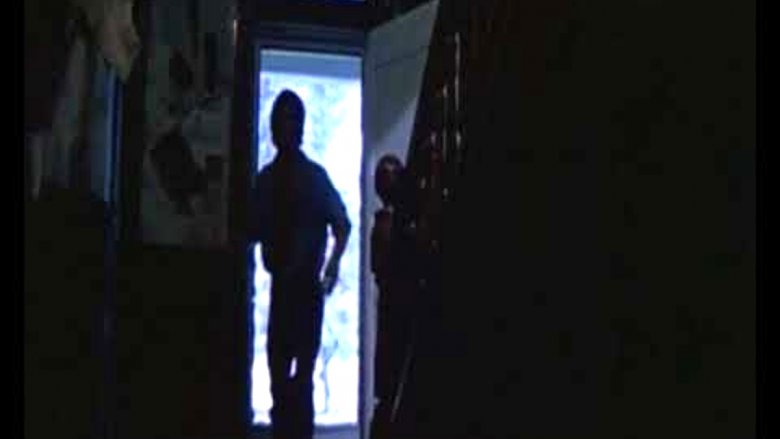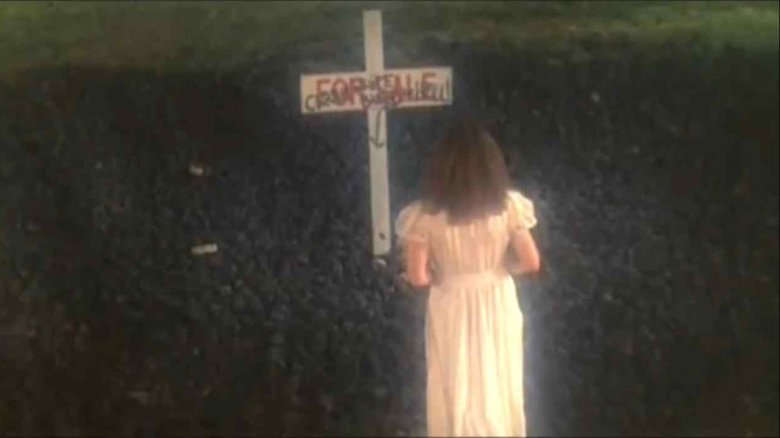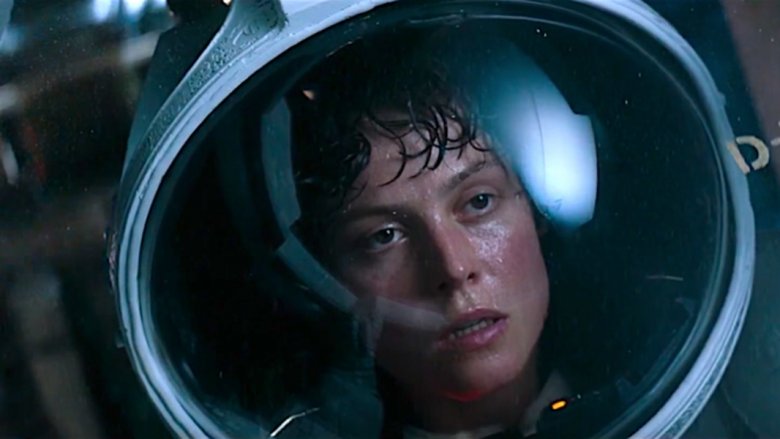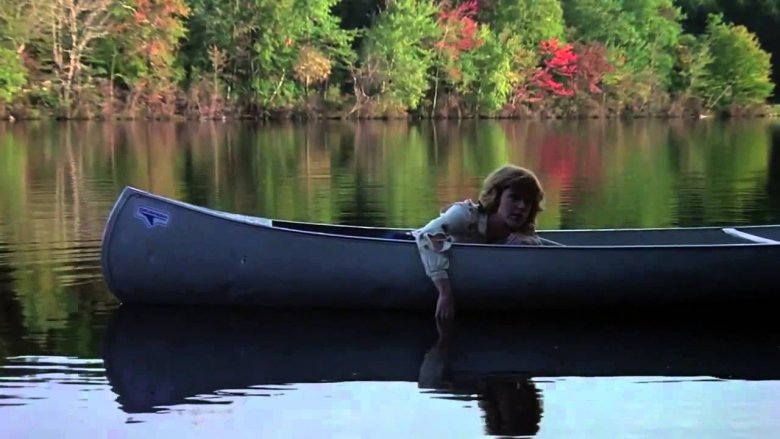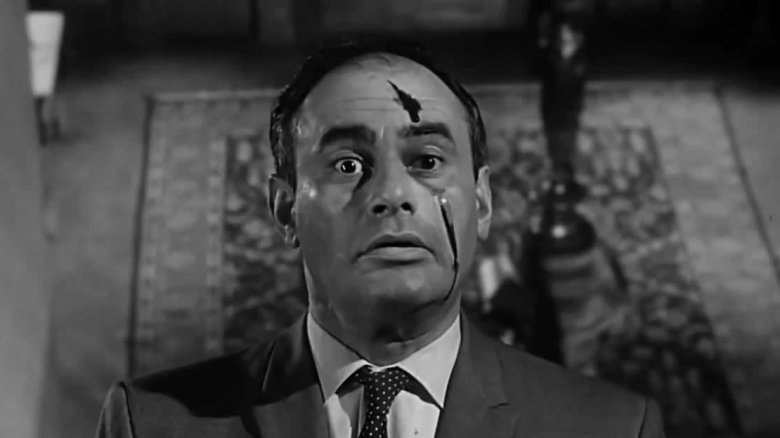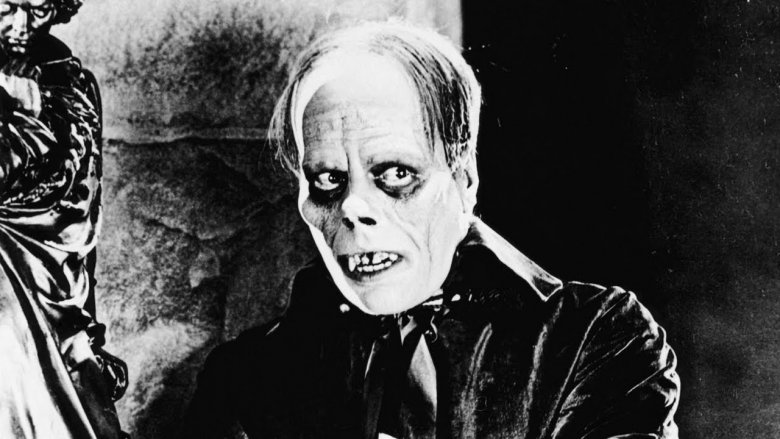Epic Movie Scares That Make You Jump Out Of Your Seat
Jump scares. Most audiences agree that they're the bane of modern horror movies. Too many use them as a shortcut to frights, sacrificing mood and atmosphere for a quick bang that does nothing but startle. Sooner or later, your nerves start to numb and you're just bored. In the end, loud sounds and empty screams don't make for much of a fulfilling cinematic experience.
Like any tool in an artist's arsenal, however, it all comes down to execution. A well-placed jump can serve as satisfying payoff to slow-burning tension, or it can rocket you forward into a story with a burst of thrilling adrenaline. There are memorable examples dating back all the way to the dawn of movies. If you're curious about how an often-misused trope can be successful, steel your nerves and check out our list of the best scares that will make you jump out of your seat.
What's in the boat?
Jaws invented the summer blockbuster by deftly blending charming humor, rollicking adventure, and insightful character moments — and, most importantly, some classic scares. There's tension in waiting for the shark to appear, there's dread in wondering what waits beneath the surface, and there's a primal terror in the very concept of being devoured by an animal.
All of that is punctuated by a few well-placed jumps, and one of them in particular never fails to make audiences scream. Before the movie has even shown us the shark, Hooper (Richard Dreyfuss) takes a scuba dive to investigate an abandoned fishing boat. Just as he reaches out to check a tooth lodged the mangled hull, the head of the vessel's unlucky owner drifts into view, terrifying both Hooper and the audience.
After being unsatisfied with the scare in test screenings, Spielberg re-shot the scene in editor Verna Fields' swimming pool at his own expense. He was determined to get the timing just right, and all that effort was worth it. Jaws still plays on big screens most summers, and you can reliably watch the crowd ripple with shock even four decades later.
Raptor in the shed
Nearly 20 years after Jaws, Spielberg unleashed another adventure blockbuster punctuated with quality scares: Jurassic Park. The fear of being eaten was back, but this time, you could at least see the beasts coming...usually. The movie first shows us the grandeur of a Brachiosaurus, then the awesome power of the Tyrannosaurus rex, but the real terror is saved for a startling reveal.
Characters speak of Velociraptors in hushed tones throughout the movie. Dr. Grant (Sam Neill) is clearly horrified to learn they're being bred in the park, and game warden Robert Muldoon (Bob Peck) warns everyone of the danger they present. But it isn't until Ellie Sattler (Laura Dern) ventures into a maintenance shed that we see just why the adult raptors are so deadly.
Ellie's efforts to restore power are intercut with Grant's efforts to get young Lex (Ariana Richards) and Tim (Joseph Mazzello) over an electric fence. Your attention is so focused on this countdown that you are completely unprepared for the raptor that leaps out form behind Ellie just when you think the danger has passed. It's a perfect example of the craftsmanship that earned Spielberg his reputation for crowd-pleasing thrills.
Closet corpse
When director Gore Verbinski remade the Japanese hit Ringu as The Ring in 2002, the film stood out among its American contemporaries specifically because it mostly lacked jump scares. Like many other horror movies of its time, The Ring was rated PG-13 and marketed to teens. This often meant that audiences could expect loud screamfests splashed with just enough blood to avoid an R, designed for parties or nights at the theater when there was nothing else to do.
The Ring, however, is a quiet, eerie story with no gore or explicit violence in sight. It relies on uncanny imagery and unsettling sounds to create an oppressive atmosphere of dread. This makes it all the more startling when Verbinski does sneak in one big jump where you least expect it. In a scene that otherwise lacks any serious tension, Ruth Embry (Lindsay Frost) recounts the story of finding her daughter's twisted corpse. Without warning, Verbinski cuts to a shot of the horrifying body. The movie never relies on jump scares afterward, but the fear that this early shock might be repeated serves to enhance the tension all the way to the haunting final frame.
The thing behind Winkie's
While David Lynch has long been recognized as a master of the unsettling and the uncanny, none of his films would comfortably fit in the "horror" category. That's what makes it extra startling when he does go for moments of all-out terror, as he does early on in Mulholland Drive. Sitting in Winkie's Diner (clearly a stand-in for Denny's), one man (Patrick Fischler) is telling another (Michael Cooke) about a nightmare he had in which a horrifying person behind that very building was making him afraid.
What begins as a fairly lighthearted conversation grows increasingly unnerving as Fischler's character gradually recognizes extremely specific elements from his dream. The two men walk to the back of the diner, and sure enough, a creepy, mud-caked being steps out from behind a dumpster. It's a simple enough moment, and on the surface, it doesn't seem directly connected to any of the scenes around it. It's so effective, though, in the way it captures the surreal-yet-mundane logic of a nightmare, cluing you in to the structure and meaning of everything you're about to see.
Enter Leatherface
Tobe Hooper's original 1974 Texas Chain Saw Massacre is a respected landmark of the horror genre, and it's not just because of the terrifying visage of Leatherface. The movie's real power is in the nitty-gritty of its craft — the raw textures of its cinematography, the uneasy pace of its camera moves, the relentless rhythm of its editing. Quite simply, it's a masterpiece of timing, an element that's especially key in its most startling moment.
Unlike most horror films, much of Texas Chain Saw takes place in broad daylight. When the unlucky Kirk (William Vail) first stumbles upon a perfectly friendly-looking farmhouse looking for gas, we might feel uneasy, but we're not expecting an onslaught of terror to come from nowhere. After Kirk spends a good long while calling out and deciding there's no one home, he hears a noise from a back room and goes to investigate. That's when he trips, and Leatherface is on him with a hammer, dragging Kirk's convulsing body behind a heavy metal door that shuts with a sickening slam. Kirk's stumble is what really makes this moment so jump-worthy, feeling real and unstaged in a way that disorients us and leaves us wondering what just happened and what nightmares wait behind that door.
Carrie lives
Brian De Palma's film adaptation of Stephen King's first novel confronts some very real horrors. As a teen girl who just doesn't fit in, Carrie (Sissy Spacek) is subjected to exactly the kind of daily torment that's common to so many high school students. When Carrie begins developing strange telekinetic powers beyond her control, bad things start happening to her classmates, and no one escapes truly unscathed. High school, Carrie reminds is, is hell for just about everyone.
De Palma's final scene is a shocking reminder that our own shame and guilt are far scarier than magic powers. As Sue Snell (Amy Irving) approaches Carrie's final resting place to pay her respects with flowers, Carrie's bloody hand springs from the ground to grab her. Sue wakes up screaming from this nightmare, but she's still tormented, as we're left watching her suffer from a terror that clearly won't end any time soon. Not only is it one of the first examples of a movie sending the audience out on one last surprise scare, it's also a haunting reminder of the feeling that we could have done more, been kinder, reached out before it was too late.
Sneaky xenomorph
The secret to Alien's success is that its science fiction trappings hide the beating, screaming heart of an old-fashioned haunted house movie. Creaking doors, leaky pipes, even a nervous cat...all the classic tropes are there. The terrifying difference is that, unlike in a haunted house, there's nowhere to go. After all, in space, no one can hear you scream.
Just when we think the terror is over, it gets closer than ever. As sole survivor Ripley (Sigourney Weaver) rockets away from the destroyed Nostromo in an escape shuttle, she begins preparing for hypersleep, letting herself be truly vulnerable for the first time. And then bam, the alien's hand bursts into view. This kind of fake-out finale has become such a part of the thriller formula by now that modern audiences might see it coming, but Alien was one of the first to pull it off so successfully, underscoring the surprising strength of its hero.
Meet Jason Voorhees
If Carrie invented the last-second surprise scare and Alien perfected it, Friday the 13th was the movie that made it an inescapable part of the horror genre. Considering what an icon Jason Voorhees has become, newcomers to the series might be surprised to find that he's not the killer in the original 1980 film (and he wouldn't even get his hockey mask until the third entry). No, that first Friday is about Jason's mother, Pamela Voorhees (Betsy Palmer), slaying her way through the counselors attempting to re-open the camp where her young son drowned.
After discovering Mrs. Voorhees' motives and beheading the maniacal mother in self-defense, final girl Alice (Adrienne King) retreats to a canoe drifting on the calm surface of Crystal Lake. But, as she watches police arrive at dawn to truly end her night of terror, the tiny specter of Jason appears to capsize her boat and drag her into the depths. Alice wakes up in the hospital, realizing that the zombie child was just a dream...or was he? No, really, was he? It's actually pretty unclear, as Jason's appearance in the sequel as a living adult confused even the filmmakers.
Death from above
Alfred Hitchcock's suspense masterpiece Psycho laid the foundation for the entire slasher film genre, but it's mainly remembered for one particular sequence: the iconic shower murder. It's been so frequently parodied, referenced, and excerpted that you probably know it by heart even if you've never seen the movie. However, one Psycho scene remains a startling surprise for newcomers and fans alike.
When private investigator Milton Arbogast (Martin Balsam) enters the Bates house looking for clues, Hitchcock begins establishing a tension that's vaguely unsettling, catching Arbogast glancing at each door and hallway before he begins slowly and carefully climbing the stairs. Suddenly, Hitchcock cuts to a bizarrely dizzying angle looking straight down from above as "Mother" emerges from her room to the stabbing strains of Bernard Herrmann's score. Arbogast's stunned tumble down the stairs was achieved by standing Balsam in front of a rear-projection falling shot. The result feels just slightly wrong, enhancing the feeling that we, too, have just been the victim of a sneak attack.
The Phantom unmasked
It may be tempting to cite jump scares as a symptom of Hollywood running out of ideas, but they're almost as old as movies themselves, and the good ones still work. Before filmmakers even had the option of using loud sounds to startle audiences, they could nonetheless shock with a well-timed frightening visual. One great example of this trick comes from Universal's 1925 silent production of The Phantom of the Opera.
Lon Chaney was the first major icon of horror films, rising to prominence during the silent era as "the Man of a Thousand Faces." He crafted his own make-up effects, and there was seemingly no end to the amount of discomfort he was willing to put himself through to spook his fans. For Phantom, he devised an elaborate construction of wires and paint that gave him a seemingly impossible skull-like countenance.
Chaney's face is first revealed when Christine (Mary Philbin) slowly works up the courage to pull off his mask, leaving him screaming into the camera. Stories of viewers fainting in the theater at the film's premiere quickly became something of a Hollywood legend. How much Universal may have played up these reports in advertising remains difficult to say, but it's undeniable that the shock remains effective, even 90 years later.
